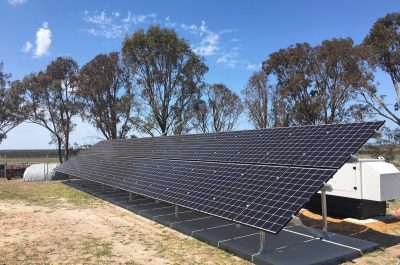Breathe easy – busting some gas myths
It is an unfortunate fact that negativity sells news and there’s nothing like a good beat-up to generate readership (aka click-bait). In the overheated, over-politicised and over-simplified environment that continues to define Australia’s climate-change narrative, energy sources are depicted as a binary good (wind, solar) or evil (coal). The latest bad guy on the block is gas.
Factual, informed and balanced debates around these issues are necessary to progress to a cleaner and healthier society. But scientific rigour should be the basis for discussions, not virtue-signaling activism.
Let’s take the recent Climate Council report titled “Kicking the gas habit: How gas is harming our health[i]”.
According to the inside front cover of the report:
The Climate Council is an independent, crowd-funded organisation providing quality information on climate change to the Australian public.
The key findings of the report have no reference to climate change. Instead, they provide broad brush statements about implied health concerns from the gas supply chain and then conclude that these services should be electrified. The report assumes no health concerns from these electrical options.
Many of the report’s key findings could easily be rebutted with evidence – in fact, many have been. For example, there are many comprehensive studies done that discredit the claims of environmental impacts of fracking[ii].
Cooking with gas and asthma
For the purposes of this article, I am focusing on the asthma claim, which probably has the broadest application as millions of households use gas for heating and cooking. Unsurprisingly, the assertion hit the activist KPI of a click-bait headline. A quick google search on “asthma and cooking” shows this story was picked up by most TV stations and newspapers around the country.
The report claims:
Cooking with gas is estimated to be responsible for up to 12% of the burden of childhood asthma in Australia.
While there are several medical studies referred to in the report to justify this statement, on analysis, these studies appear to rely on correlation. There is no reference to scientific methods of testing hypotheses with experiments, control groups and peer review.
A report[iii] published by the American Gas Association (AGA) last year cites a 2013 study by the [US] National Library of Medicine, which analysed more than 500,000 school aged children from 47 countries and found:
There is no evidence of an association between the use of gas as a cooking fuel and either asthma symptoms or asthma diagnosis.
Cooking food on any stove – gas or electric – produces particulate pollutants from steam, smoke, grease, and food. It is always recommended all stoves have an active range hood or kitchen ventilation system.
What causes asthma?
The fundamental causes of asthma are not completely understood[iv]. There are many factors[v] that can contribute to developing the disease, with the strongest risks being a combination of genetic predisposition and environmental exposure to inhaled substances and particles that may provoke allergic reactions or irritate airways, such as:
- viral respiratory infections
- indoor allergens (for example, house dust mites in bedding, carpets and stuffed furniture, pollution and pet dander)
- outdoor allergens (such as pollens and moulds)
- tobacco smoke
- chemical irritants in the workplace
- air pollution
- strong odours, such as perfume.
There are also other triggers including cold air, temperature change, stress, hormonal changes, physical exercise and certain medicines.
Correlation or causation
The medical studies that have found gas to be linked to asthma appear to have identified correlations[vi] instead of establishing the causal link to asthma. According to the Australian Bureau of Statistics[vii]:
Correlation is a statistical measure (expressed as a number) that describes the size and direction of a relationship between two or more variables. A correlation between variables, however, does not automatically mean that the change in one variable is the cause of the change in the values of the other variable.
Causation indicates that one event is the result of the occurrence of the other event; i.e. there is a causal relationship between the two events. This is also referred to as cause and effect.
Developing correlations may be helpful in identifying patterns between variables, but it could also lead to misinterpretation. For example:
“gas use can be correlated to colder temperature, but it does not cause that temperature.”
So, while correlations between asthma and gas cooking may be observed in some of the research, similar correlations also exist between cold temperatures, or wood heating or fog and asthma. As noted above, cold air and air pollution are triggers for asthma and gas is generally used more extensively in colder regions where there is also ongoing heating from wood fires. This does not necessarily translate to gas cooking being the cause of asthma.
But what about the 12 per cent?
The claim:
Cooking with gas is estimated to be responsible for up to 12% of the burden of childhood asthma in Australia.
is a selective misrepresentation of the research it cites. The paper by Knibbs et al[viii] states:
While our results suggest that 12.3% of the childhood asthma burden could be averted were gas replaced by a different energy source for cooking, this assumes that the new energy source would not produce indoor emissions; this is unlikely, as cooking itself can be a major source of emissions. More important is our finding that the burden of asthma associated with gas stoves could be reduced from 12.3% to 3.4% were all homes with gas stoves fitted with high efficiency range hoods that vented outdoors. [Emphasis added]
Furthermore, the analysis by Knibbs et al for gas cooktops is based on an earlier meta-analysis project[ix] that consolidated several international data sets and identified associations between nitrogen dioxide (NO2) and asthma. That research selected data sets that emphasised the presence of a gas cooktop but did not consider the appliance usage or other exposure-related factors. It assumed that NO2 was an appropriate surrogate for gas cooking, but did not find a direct correlation:
Gas cooking produces NO2 and other pollutants such as ultrafine particles. Our finding of an association between gas cooking and asthma in the absence of an association between measured NO2 and asthma suggest that gas cooking may act as a surrogate for causal variables other than air pollutants produced by gas combustion. (Lin et al, pg 1734)
So, what does it all mean? Statistical analysis can identify an association between gas cooking and asthma but not a causal relationship. There could be many other factors that should be considered, for example, gas cooking[x] likely occurs in households with gas heating, which are most commonly found in colder climates – and cold can induce asthma symptoms[xi].
The research has not adopted the scientific method to find the causal link between gas and asthma. The research used by the Climate Council does not support words such as “estimated to be responsible…”. Responsibility requires a causal relationship to be established and that has not been evidenced in the research.
Gas’ role in averting asthma
Selective claims on the health impacts of gas can be misleading by drawing on correlations instead of causal evidence. A robust debate should provide both sides of the argument.
People with asthma are more likely to describe themselves as having a poor quality of life. Professionally installed and properly maintained gas heating provides warmth that can combat damp and cold (two asthma triggers) and hot water to wash bedding to reduce indoor allergens (another asthma trigger).
Scare-mongering about a fuel choice based on selective use of research will do far more harm than good if customers deny themselves winter heating because they have gas.
Any appliance in the home that relies on electricity or gas must be properly maintained, installed by a qualified and licensed technician and operated in the manner for which it was designed.
[i] Climate Council (2021), Kicking the gas habit: how gas is harming our health.
[ii] https://energyinformationaustralia.com.au/oil-and-gas-explained/environmental-management/hydraulic-fracturing
[iii] https://www.aga.org/globalassets/aga-iaq-questions-and-answers-09.04.2020.pdf
[iv] https://www.aihw.gov.au/reports/chronic-respiratory-conditions/asthma/contents/asthma
[v] https://www.who.int/news-room/fact-sheets/detail/asthma
[vi] The work by Lin et al (2013) included 41 previous studies on the association between nitrous oxide and childhood asthma but did not identify whether thes oxide or gas cooking led to asthma.
[vii] https://www.abs.gov.au/websitedbs/D3310114.nsf/home/statistical+language+-+correlation+and+causation
[viii] Knibbs et al (2018), Damp housing, gas stoves, and the burden of childhood asthma in Australia, The Medical Journal of Australia
[ix] Lin et al (2013), Int J Epidemiology, 42 1724-1737
[x] The study by Lin et al (2013) only included natural gas appliances supplied by gas networks.
[xi] https://asthma.org.au/blog/asthma-in-cold-weather/


